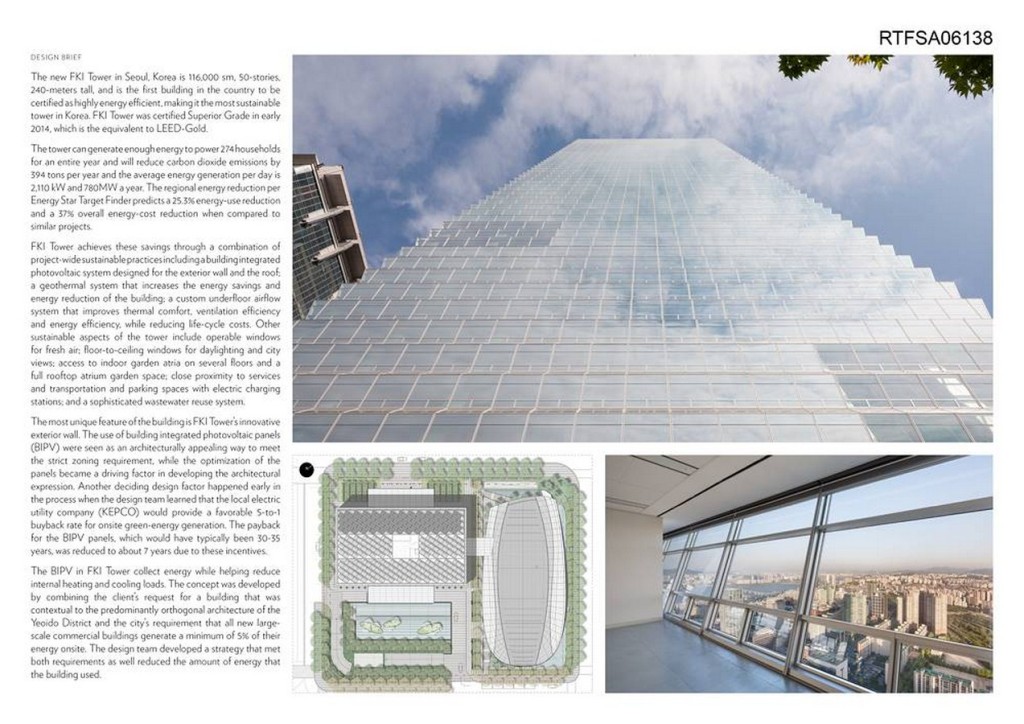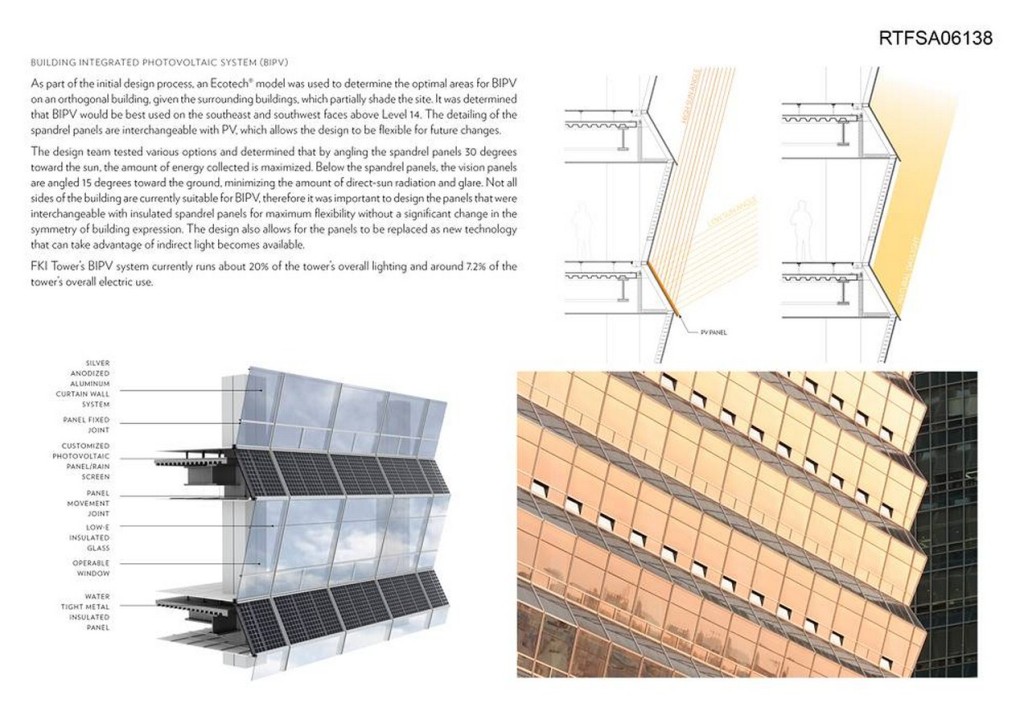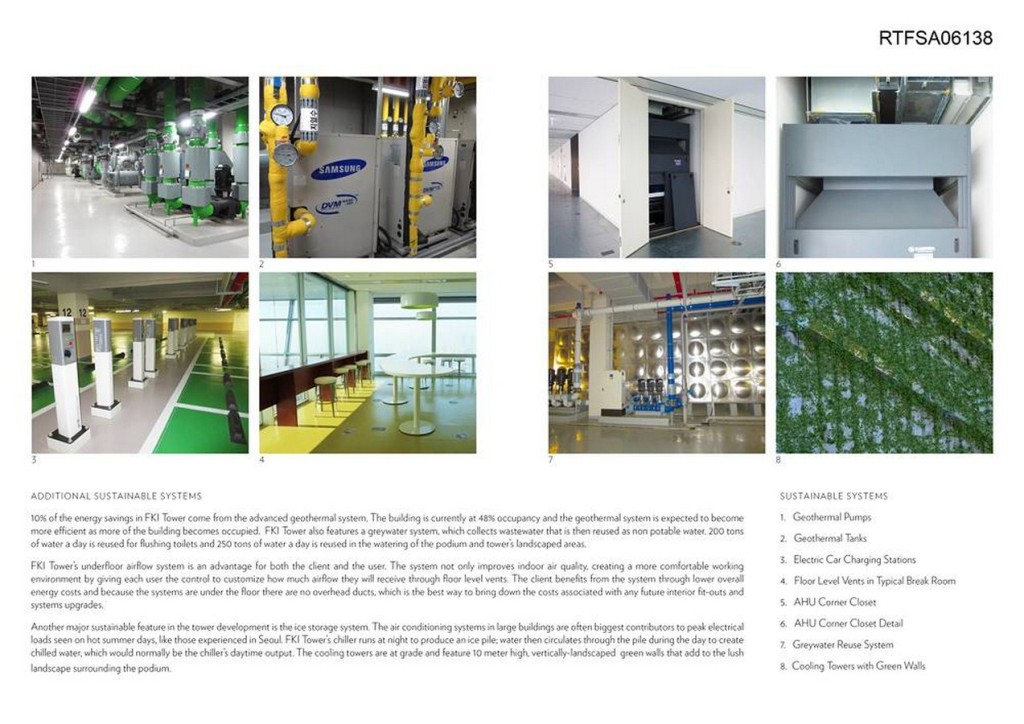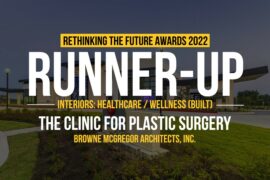The new FKI Tower in Seoul, Korea is 116,000 sm, 50-stories, 240-meters tall, and is the first building in the country to be certified as highly energy efficient, making it the most sustainable tower in Korea. FKI Tower was certified Superior Grade in early 2014, which is the equivalent to LEED-Gold.
Architect: Jocelyn Moriarty
Country: United States

The tower can generate enough energy to power 274 households for an entire year and will reduce carbon dioxide emissions by 394 tons per year and the average energy generation per day is 2,110 kW and 780MW a year. The regional energy reduction per Energy Star Target Finder predicts a 25.3% energy-use reduction and a 37% overall energy-cost reduction when compared to similar projects.

FKI Tower achieves these savings through a combination of project-wide sustainable practices including a building integrated photovoltaic system designed for the exterior wall and the roof; a geothermal system that increases the energy savings and energy reduction of the building; a custom underfloor airflow system that improves thermal comfort, ventilation efficiency and energy efficiency, while reducing life-cycle costs. Other sustainable aspects of the tower include operable windows for fresh air; floor-to-ceiling windows for daylighting and city views; access to indoor garden atria on several floors and a full rooftop atrium garden space; close proximity to services and transportation and parking spaces with electric charging stations; and a sophisticated wastewater reuse system.

The most unique feature of the building is FKI Tower’s innovative exterior wall. The use of building integrated photovoltaic panels (BIPV) were seen as an architecturally appealing way to meet the strict zoning requirement, while the optimization of the panels became a driving factor in developing the architectural expression. FKI Tower’s BIPV system currently runs about 20% of the tower’s overall lighting and around 7.2% of the tower’s overall electric use.

In addition to the exterior wall panels, FKI Tower also features an expansive rooftop atrium garden with custom photovoltaic panels, which generate further energy for the building. As with the exterior wall panels, the ideal angle of the panel placement on the roof was studied in detailThe garden is planted with Korean Boxwood, a lush and hearty shrub that is low-maintenance. The rooftop atrium also has several seating and viewing areas that tenants can sit and enjoy views of the surrounding city.

FKI Tower has 632 parking spaces, 32 of which have electric car charging stations—the building has nearly 9% of all electric-charging stations in Seoul—and is within close proximity to excellent local transportation links, including MRT stations and bus routes. All transportation is either directly linked to the tower or within a short walking distance. FKI Tower has a walkability score of 92 because it is located close to popular services and amenities.
The sculptural podium piece is surrounded by landscaped courtyards that act as a park, available for public use. The podium amenities, also available for public use, include a banquet hall, a central restaurant, meeting spaces, and a conference center.
Prev Post
TVZEB | Traverso & Vighy Architetti
3 Mins Read





